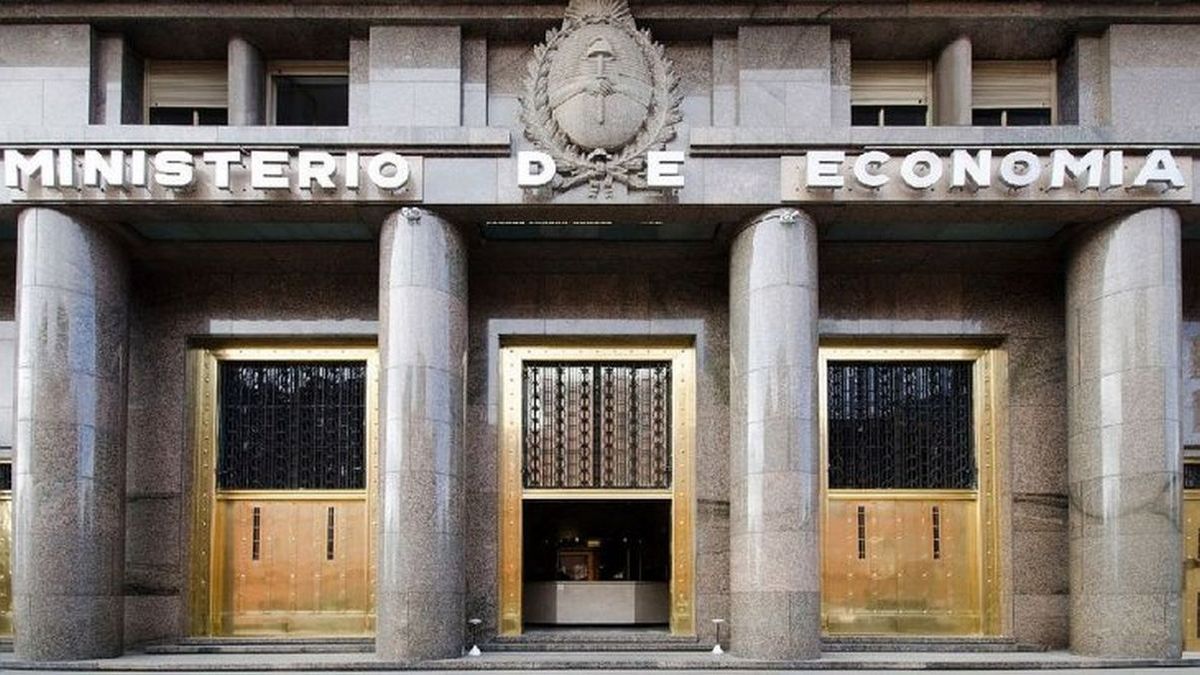The Ministry of Economy held this Wednesday the last tender for peso debt in August. In the operation, placed four fixed-rate bonds (LECAP) and an inflation-linked bond (CER) for a total of $4.47 billion. So, managed to renew the end-of-month maturities and raised a surplus of $860 billionwhich will go towards increasing the liquidity cushion in view of the large commitments in September. It declared a BONCER and two dollar-linked bonds void.
The team of Luis Caputo The bank needed to refinance $3.61 billion of a LECAP and a dual bond that expire this Friday. This is a much larger amount than the previous placement (when they totaled $1.26 billion), although clearly below the more than $14 billion that expire throughout September, the most challenging month of the rest of the year.
At Wednesday’s auction, the Ministry of Finance received 4,594 bids for a total amount of $4.84 billion, of which it decided to award $4.47 billion. Thus, it managed to obtain a net financing of around $860 billion.
“The proceeds from this tender, above the $3.61 billion maturities, will be deposited in the National Treasury account at the Central Bank”announced the Secretary of Finance, Pablo Quirno, on his social network account X.
This is an account in which the Government was accumulating a “liquidity cushion” which until last week was around $16.7 billion. That money is deposited at zero rate and functions, on the one hand, as a means of monetary absorption and, on the other, as a guarantee regarding the ability to pay future maturities in local currency, officials say.
Embed – https://publish.twitter.com/oembed?url=https://x.com/pabloquirno/status/1828887601404936355&partner=&hide_thread=false
The Ministry of Finance announced that in today’s tender it awarded $4.47 billion after receiving offers totaling $4.84 billion.
This tender allowed us to extend the average maturity period, and it was also the first time that we awarded instruments at a…
— Pablo Quirno (@pabloquirno) August 28, 2024
Debt tender and rate cuts
Economy had included in its call for tenders for eight debt instruments in pesos. Among them, four LECAP: The one that expires in February 2025 was reopened and four new letters were issued on November 11, 2024, June 30, 2025, and August 29, 2029. On the other hand, he had put on the table four indexed bonds: two of them with exchange rate adjustment to March and June 2025, and two long-term inflation-linked securities to December 2026 and December 2027.
It was a menu with several signs. Finance sought to test, through a one-year fixed-rate note, whether the market would buy into the idea of a lasting slowdown in inflation, a possibility that eventually “coincides” with a scenario with continuity of the exchange rate restriction until the legislative elections next year and without devaluation at least until then. In that sense, the offer of two dollar-linked bonds maturing during the first half of 2025 seems like an attempt to reinforce the premise of the “go-go” exchange rate.
The result showed that Investors’ appetite was concentrated on LECAPsto such an extent that the Treasury declared void the placement of the two dollar-linked bonds (which received little demand, perhaps in line with the continue-continue exchange rate) and the BONCER to 2027.
“This tender allowed us to extend the average maturity period, and it was also the first time that we awarded fixed-rate instruments with a one-year term,” Quirno emphasized.
Anyway, The instrument that attracted the most demand was the shortest letter. In the LECAP in November (with less than two and a half months to go), the Ministry of the Economy awarded $1.55 trillion. It was followed, in fact, by the one-year LECAP, which attracted $1.06 billion. Meanwhile, the February and June bills attracted $635,623 million and $917,336 million, respectively.
In this auction, in addition, The Government managed to reduce the interest rate of the instruments issued. For example, in the last tender, the longest note offered (another LECAP due in June 2025) had been placed at a minimum rate set at 3.95% effective monthly (TEM). This time there were no minimum rates and the new LECAP that matures in the same month was cut to 3.90% TEM.
The other bills were placed at rates of 3.75% (for November 2024), 3.78% (for February 2025) and 3.88% (for August 2025).
Finally, Finance placed $301,659 million in the inflation-linked bond as of December 2026, which cut with a positive real rate of 8.57%.
In that sense, Felipe Nuneza member of the economic team, emphasized: “The rate cut continues with respect to the previous tender in the long part of the curve because inflation expectations are anchored downwards (improving the ex-ante real rate cushion). “The lack of demand for dollar-linked assets dispels expectations of devaluation.”
Source: Ambito




